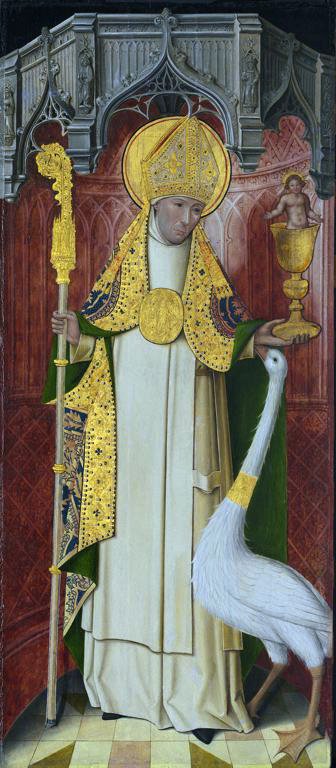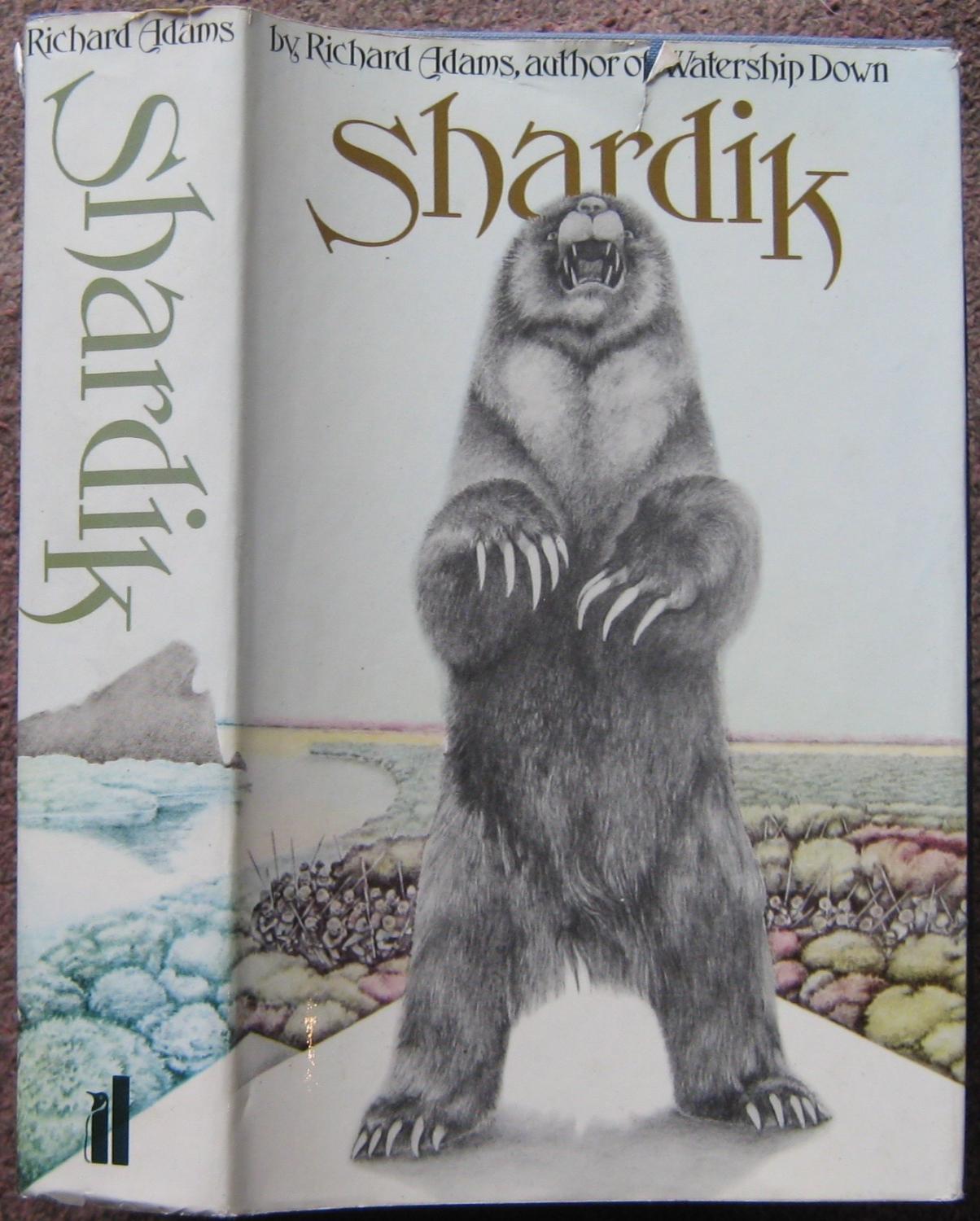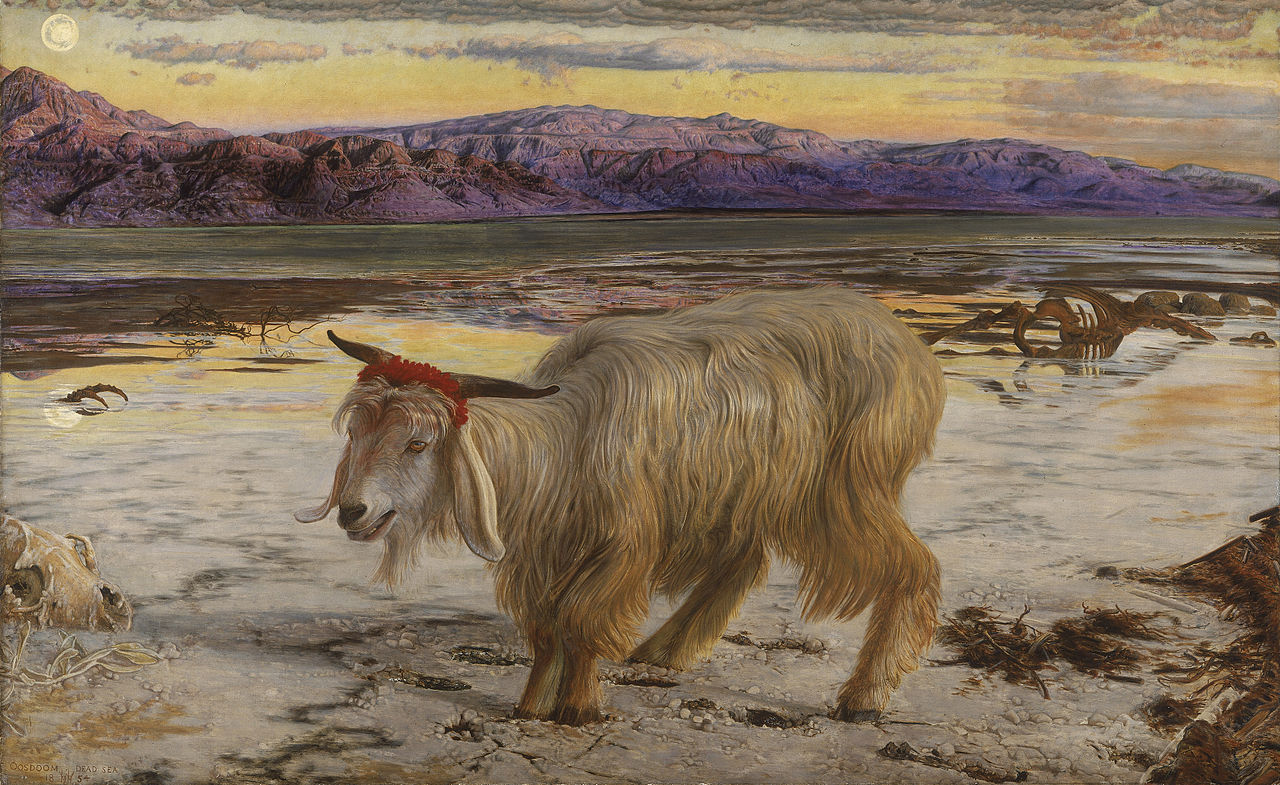The Sacred Geese of Rome.
 |
| 'What's that, Mr Hissy? Timmy's fallen into the aqueduct?' (Image found here.) This is a beautiful picture. Those are some implausibly fancy goose houses. |
The Sacred Bull of Apis, in the Histories of Herodotus.
Crocodopolis, on the Nile and the sacred reptile there within.
The Sacred Cow of Hinduism and the various animal or half-animal incarnations of Vishnu.
The imagery of the Lion of Judah, or the Brazen Serpent.
The prophet Elijah being fed by ravens.
Odin's surveillance ravens; the cats on Freya's chariot and the goats that pull Thor's.
The tame bear of St Corbinian and the Swan of St Hugh of Lincoln.
 |
| St Hugh of Lincoln, being pestered at an inopportune moment. Image found here. |
To say nothing of literature:
Shardik, the titular great bear of Richard Adams's novel.
 |
| Image found through AbeBooks. Shardik is a pretty major influence on this post. That and the goose painting. |
The Chronicles of Prydain, with their oracular pig and assistant pig-keeper.
The Chronicles of Narnia, with Aslan, who is definitely a lion, not one who is strong as a lion (as Trumpkin finds out) - and certainly not a tame lion.
Small Gods, and its numerous invocations of incarnate deities...
There is ample reason for clerics (prophets) to have an animal companion of some kind.
However: there is a distinction between a priest having a pet and a divine presence in the shape of a beast. The one is commonplace and adds little thematically; the other has some degree of greater interest. The distinction is much like that of G K Chesterton's Father Brown: he is a priest who solves mysteries, not a detective who sometimes says mass.
So, I shall determine a number of states in which a prophet in The 52 Pages might have a Sacred Animal around them and how this effects play.
This is deliberately dissimilar to spells like Call Familiar or Befriend Beast. The latter could hypothetically co-exist with the Sacred Animal.
Firstly, there is a theological status to consider:
1. Animal is God. Trying to herd or constrain the Sacred Animal is blasphemous. Aslan is not a tame lion. It has a direct line to the deity, or the Animal is the deity. + 2 spell casts a day
2. Animal is Beloved of God. The believer must not direct the Sacred Animal, but may advise it as best possible. Any true Sacred Animal will listen - at least some of the time. No goad or leash is permitted. + 1 spell cast a day
3. Animal is Sacred The Prophet is the Animal's keeper. They are blessed, if not outright divine and may be guided or questioned - as a cleric might a hermit. Nonetheless, harsh or abusive treatment is blasphemous.
Then there is the nature of the animal to consider:
A. Animal may readily Ignore Man A bear, a lion, a dragon. Pretty terrifying, largely unstoppable. None of these could be a domesticated animal. Start with 2 extra spells of a suitable school.
B. Animal may be Led by a Man A bull, a horse, a crocodile - you wouldn't want to tangle with them, but they are not the most fearsome of beasts. Some may be domesticated. Start with 1 extra spells of a suitable school.
C. Animal is Easily Controlled by a Man A goose, a dog, a tortoise - they may be actively domesticated they certainly can be picked up.
The Sacred Animal functions rather like a Wizard's spellbook - it must be present at some point throughout the day for the Prophet to cast spells.
The movements of the animal are determined by the factors above, the player's choices and the GM's decisions (as well as what kind of animal it is - a bird can fly, but may be unwilling to go underground; a sacred whale is subject to numerous restrictions). A Sacred Animal might be tougher and cleverer than other animals - but it can still be killed (in what will doubtless form a new portion of divine scripture).
In play, (not that this has been tested) a Prophet with a 1A Sacred Beast (for instance) has the assistance of the Tiger Avatar of the Bone Goddess (IE, a larger than usual tiger will turn up and rip into your foes) and more spells and more chances to use them. However, said tiger goes where said tiger pleases.
A Prophet with a 3C Sacred Beast is rather in the position of Brutha from Small Gods (yes, I know the tortoise is Om himself); more guile and craft will be needed, though the player is freer to move around.
A 3A Sacred Animal is rather like the novel Shardik (never mind the actual theology of the Ortelgans); a massive bear roughly speaking on your side, but still a massive bear that goes it's own way.
A 1C Sacred Beast is powerful and portable - but the prophet is still compelled to acknowledge their demands, which may be awkward.
Dragons and other outsize beasts probably deserve an 'A+' ranking: you really can't follow them - but you don't have to so much; their spell granting influence lingers a little longer. They don't turn up often, but when they do, you have a dragon by your side, with all that entails. No A+ Sacred Beast can be a 3.
A SLIGHLTY SILLY GRIMDARK ALTERNATIVE:
You are playing a Prophet from the Church of Stern Feudal Monotheists. There is an inquisition, a hierarchy and flagellants.
The Church of Stern Feudal Monotheists once had an sainted exorcist that trapped demons in pigs. The pigs have been kept over the years and may be convinced by sundry means to perform magical spells for the benefit of the Church.
As a Holy and Devoted Servant, you have been entrusted with their use and will presumably evolve a humorous buddy-cop style relationship between yourself and a pig that occasionally speaks with a voice straight out of diabolical central casting to offer you a Faustian bargain.
A SLIGHLTY LESS SILLY GRIMDARK ALTERNATIVE:
 |
| The Scapegoat, William Holman Hunt. You have to follow this thing everywhere. Found here. |
Any thoughts?